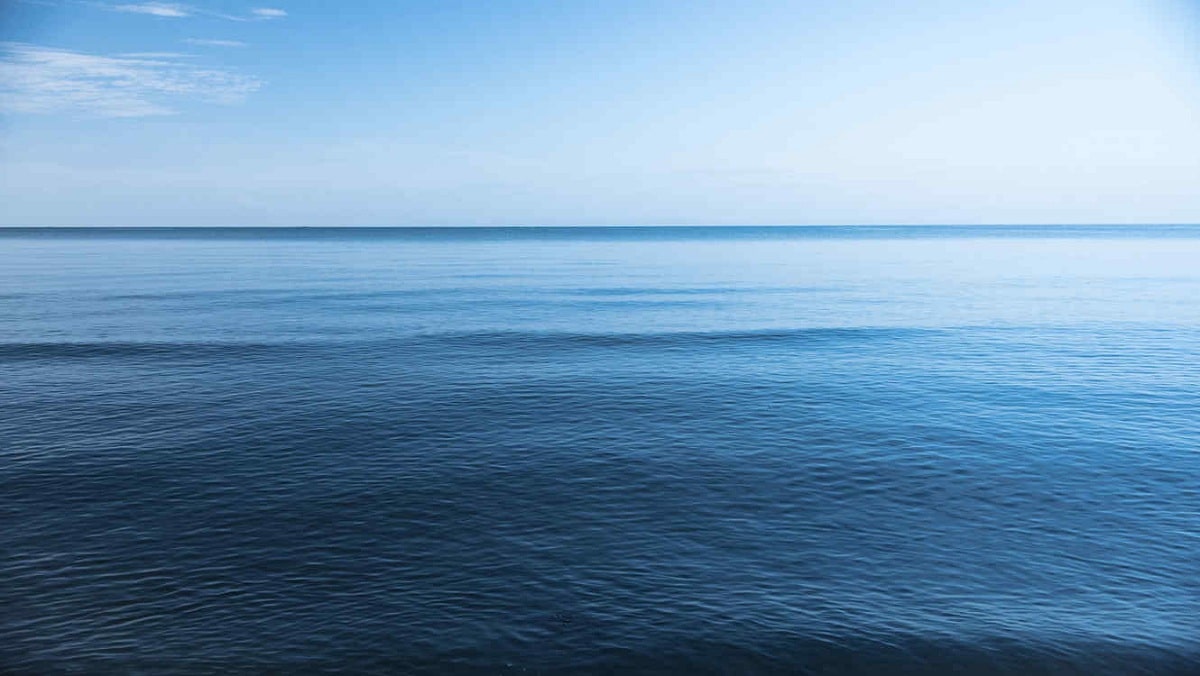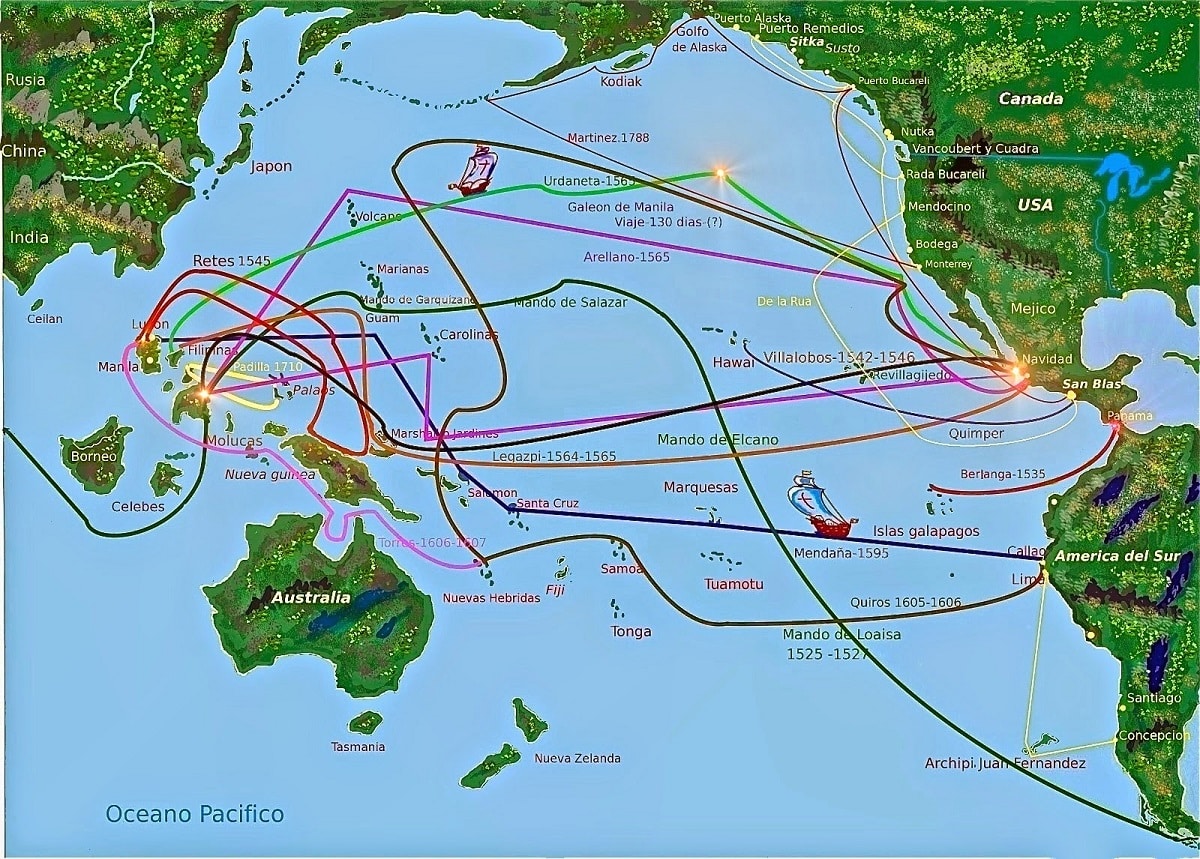
The Pacific Ocean is the largest body of water in the world, covering more than 30% of the earth's surface and hosting a large number of island countries and territories. The Pacific Ocean countries they have a great variety of characteristics, from highly industrialized countries to small and less developed nations. However, there are certain characteristics that are common to many of the Pacific countries.
For this reason, we are going to dedicate this article to tell you about the different characteristics, geology and culture of the countries of the Pacific Ocean and some curiosities of the ocean.
Pacific Ocean countries

First, many of the Pacific countries have great cultural and ethnic diversity, due to their strategic position as a bridge between Asia and the Americas. From the native peoples of Oceania to immigrant communities from China, Japan and other Asian countries, the Pacific is a melting pot of cultures and traditions.
Second, most Pacific countries are highly dependent on fishing and agriculture for their livelihood. Fishing is an important source of income and employment in many coastal countries, while agriculture it is a vital activity in island countries that have limited arable land. In addition, some countries in the Pacific Ocean also have natural resources such as oil and natural gas.
Third, many of the countries in the Pacific Ocean face significant economic and social challenges. Poverty, unemployment, lack of access to education and basic health services are common problems in some Pacific countries. Furthermore, many of these countries also face environmental challenges, such as climate change and biodiversity loss.
These countries have a rich history and cultural heritage that is important to preserve and protect. From the ancient cultures of the indigenous peoples of Oceania to the colonial influence of Europeans, Pacific history is rich and diverse. The preservation of cultural sites and the promotion of sustainable tourism are important to maintaining and sharing the rich cultural heritage of the Pacific. They are diverse and unique in many ways. While they face significant challenges, they also have a rich culture, history, and natural heritage that deserves to be protected and valued.
Economic importance
The Pacific is of great economic importance for the following reasons:
- It has important deposits of oil and gas, polymetallic nodules, sand and gravel.
- It represents an important maritime trade route.
- Fishing is one of the most benefited industries due to the concentration in the Pacific Ocean of various edible fish and shellfish that are in high demand in various countries, especially in Asia. The largest tuna fleet in the world fishes in this ocean. The Northwest Pacific is considered the most important fishery, producing 28 percent of the world catch. This is followed by the Western and Central Pacific region, which accounts for 16 percent of the world catch. In addition to tuna, horse mackerel, Alaskan whiting, baby sardines, Japanese anchovies, cod, hake and various types of squid are also caught in large quantities.
- The Pacific Ocean is connected to the Atlantic Ocean through natural channels in the southern tip of America, the Strait of Magellan and the Drake Sea, but perhaps the most efficient and direct route is through the artificial Panama Canal.
- Piracy is a maritime threat that hinders free passage in the South China Sea, the Celebes Sea, and the Sulu Sea. Armed robbery and kidnapping are frequent crimes that are rarely stopped. Ships and other vessels must take preventive and defensive measures to minimize risks.
ocean conservation
The Pacific faces great challenges: climate change, plastic pollution and overfishing. Although it is protected under international law, its sheer size means that efforts to preserve its natural resources are not easy to sustain.
According to data released by the New York Times, there are some 87.000 tons of garbage in the Pacific Ocean, and this figure will increase in the coming years, among them, plastics and fishing nets are the most abandoned elements along the extension. This accumulation of waste is known as Garbage Island, a 1,6 million square kilometer area between Hawaii and California.
On the other hand, many parts of the Pacific Ocean need to recover from overfishing, since the populations of species destined for human consumption fail to recover during the reproduction periods, which affects marine biodiversity. Illegal hunting of endangered species is one of the biggest threats in the Pacific.
Pacific Ocean Islands

The Pacific Ocean has thousands of different islands, most of which belong to Oceania, divided into three distinct regions:
- Melanesian: New Guinea, Papua New Guinea, Indonesia, New Caledonia, Zenadh Kes (Torres), Vanuatu, Fiji and Solomon Islands.
- Micronesia: Mariana Islands, Guam, Wake Island, Palau, Marshall Islands, Kiribati, Nauru and the United States of Micronesia.
- Polynesia: New Zealand, Hawaii, Rotuma, Midway, Samoa, American Samoa, Tonga, Tovalu, Cook Islands, French Polynesia, and Easter Island.
In addition, there are other islands that do not belong to this continent, such as:
- Galapagos Islands. It belongs to Ecuador.
- Aleutian Islands. They belong to Alaska and the United States.
- Sakhalin and the Kuril Islands. It belongs to Russia.
- Taiwan It belongs to the Republic of China and is in dispute with the People's Republic of China.
- Philippines.
- Islands in the South China Sea. It belongs to China.
- Japan and the Ryukyu Islands.
The deepest known part of all the world's oceans is in the western Pacific Ocean, near the Mariana Islands and Guam, and is known as the Mariana Trench. It has the shape of a scar or crescent, extends over 2.550 kilometers of crust and reaches a width of 69 kilometers.
The maximum known depth is 11.034 meters, which means that if Everest were to collapse into the Mariana Trench, its summit would still be 1,6 kilometers below water level.
I hope that with this information you can learn more about the countries of the Pacific Ocean and their characteristics.